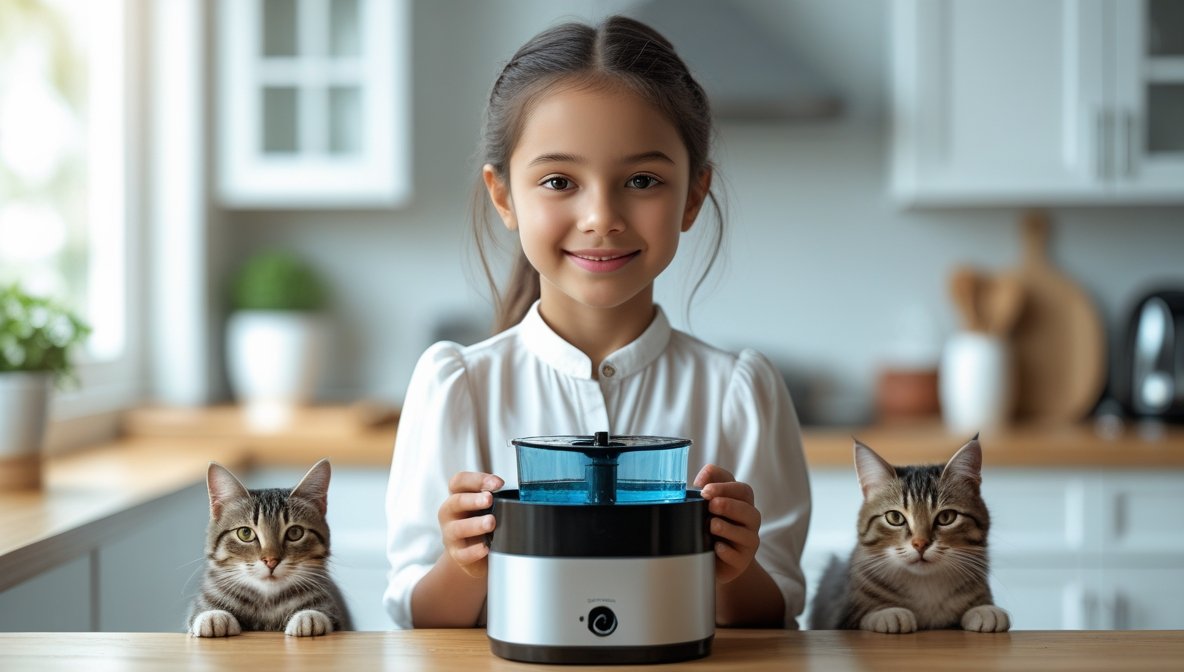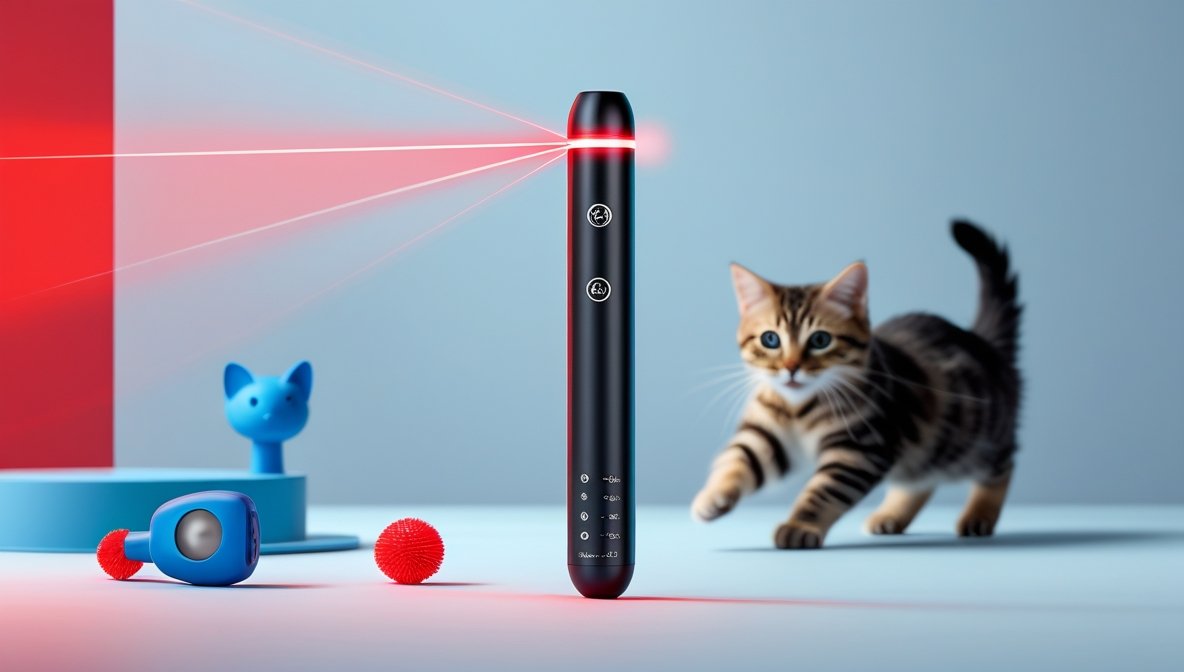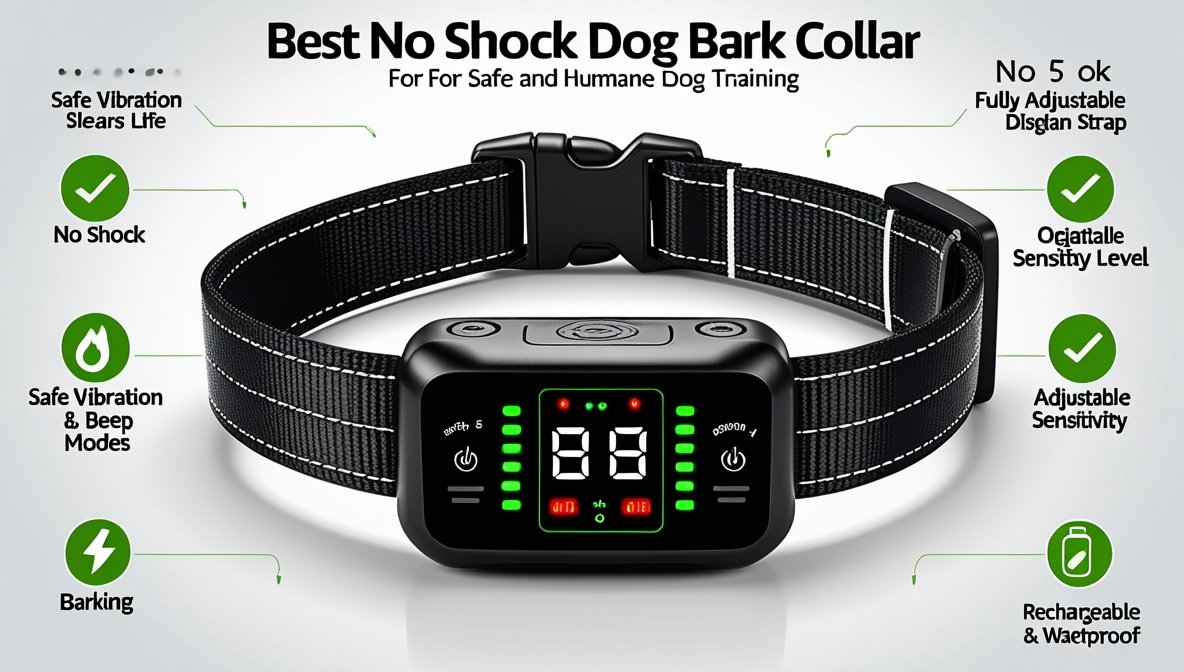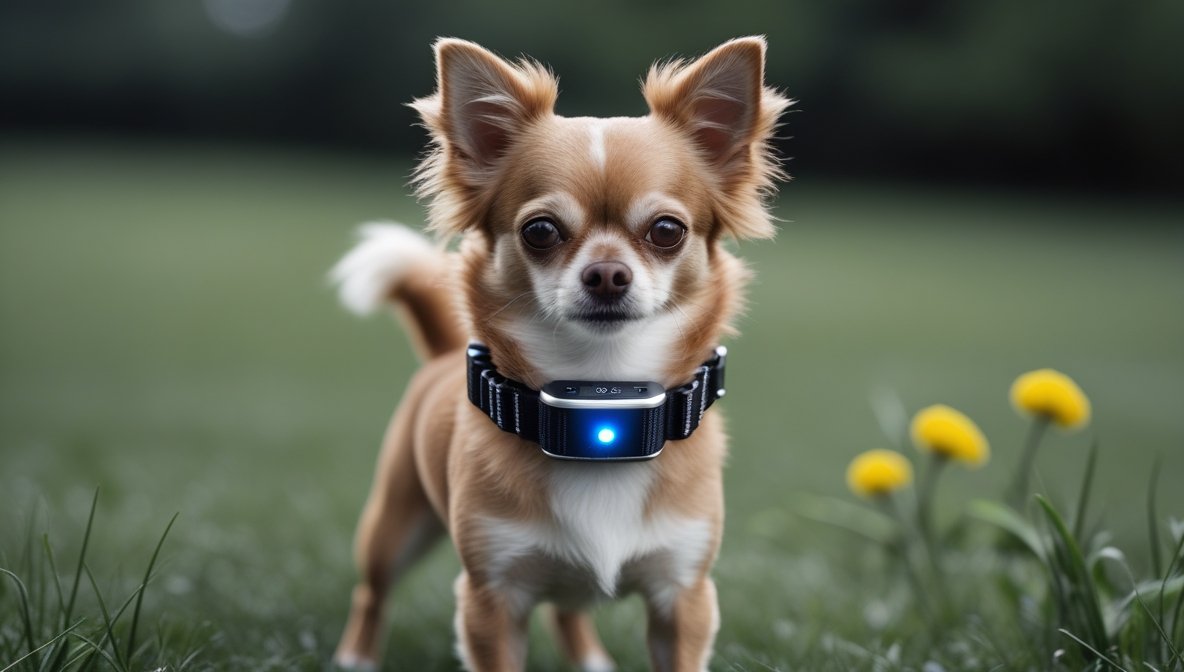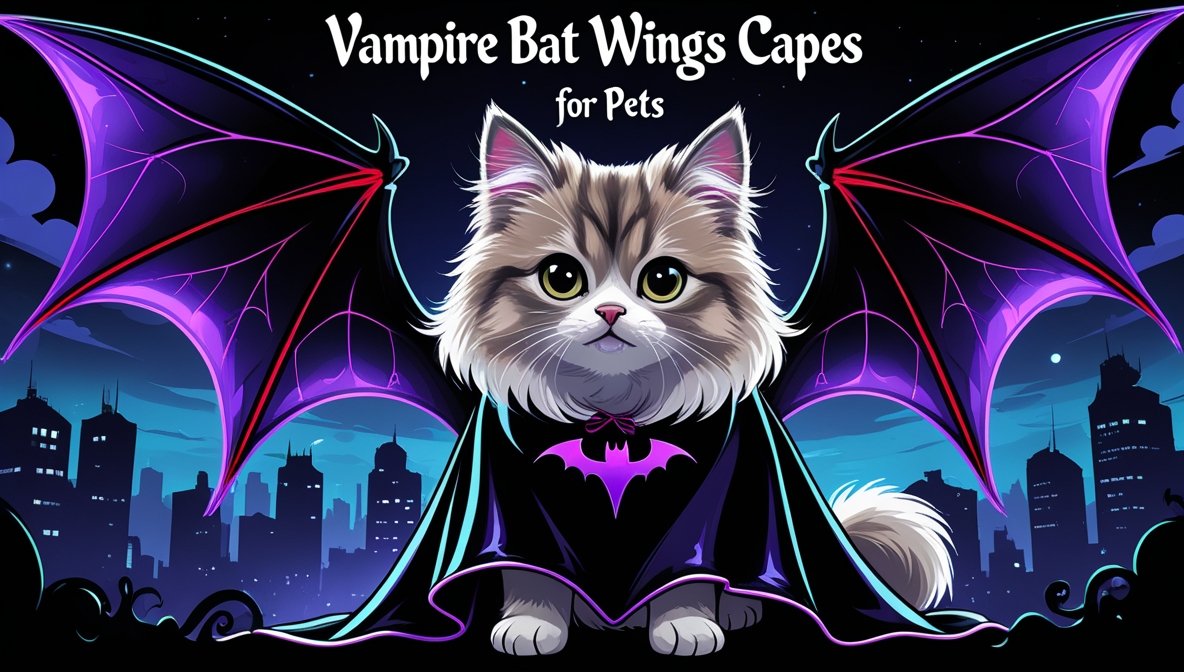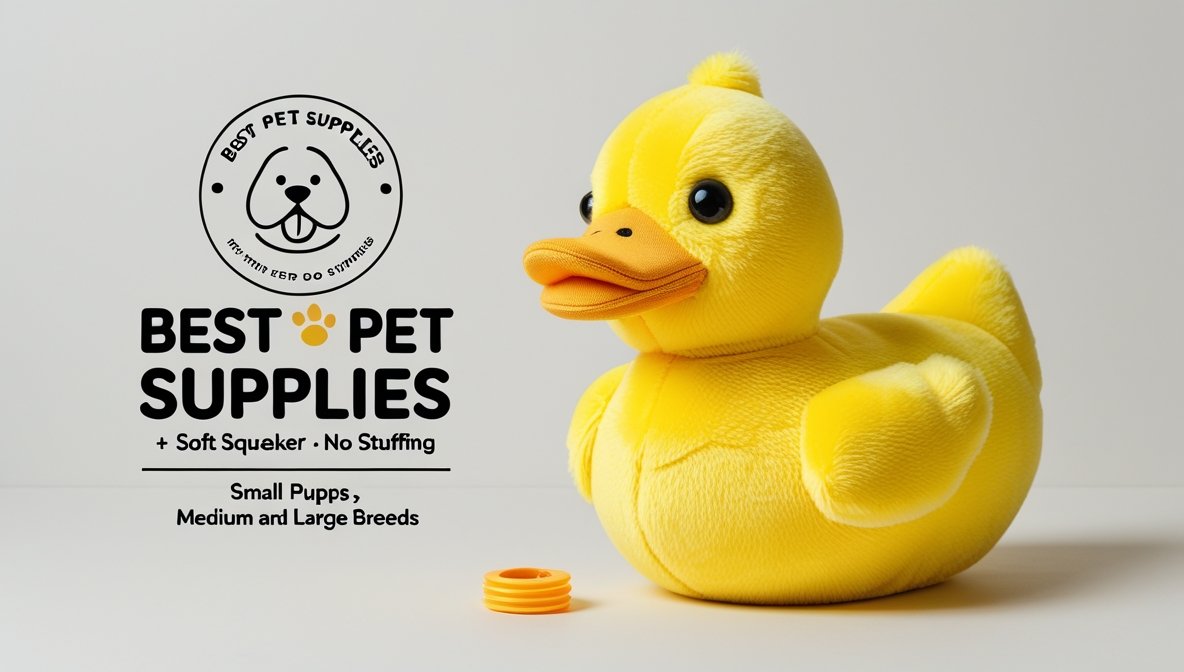With nearly half of U.S. households owning dogs, barking is a common issue many owners face. Excessive barking can strain relationships with neighbors or family, so finding an effective barking deterrent is crucial. Traditional shock collars deliver a painful electric stimulus, but no-shock bark collars use gentler methods (sound, vibration or spray) to curb barking. This article covers everything you need to know about the best no shock dog bark collar options in the USA: how they work, benefits, top models, and buying tips. We’ll also highlight collars suited for small dogs.
No-shock collars are designed to stop excessive barking without pain. Instead of electric shocks, they use cues like a beep, a vibration or a harmless spray. For example, ultrasonic collars emit a high-pitched tone dogs hear but humans do not, and vibration collars gently buzz the dog’s neck when barking is detected. Citronella spray collars release a quick burst of lemon-scented mist that dogs find unpleasant. All these methods train a dog to associate barking with an interruption, teaching it to bark less best no shock dog bark collar.
Table of Contents
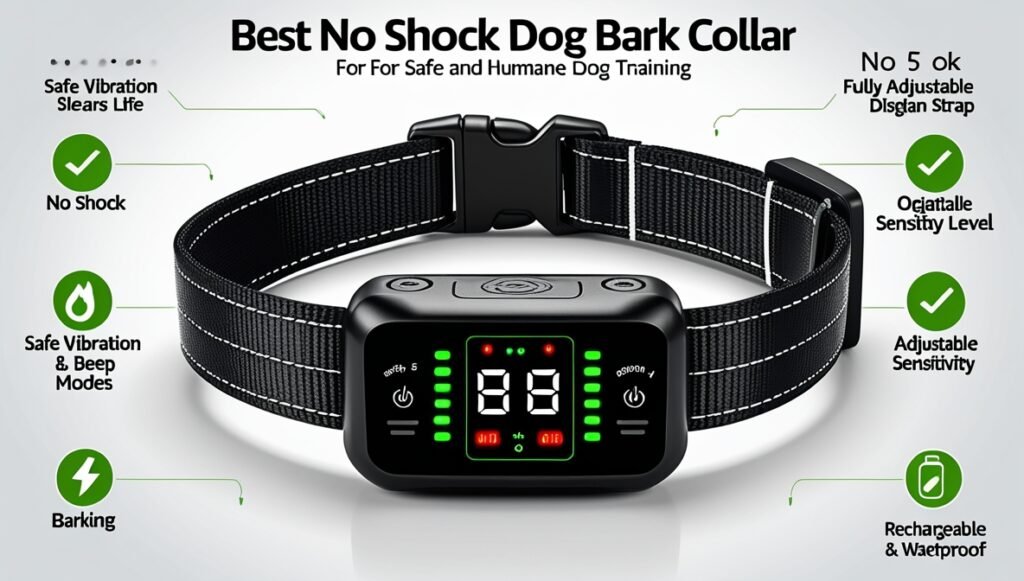
No-shock bark collars are part of a wider category of anti-bark devices that also include static (shock) collars. All bark collars work by “adding stimuli that a dog won’t like” to stop barking. But by removing electric shocks, no-shock collars aim to be more humane. The American Kennel Club notes that vibration collars act only on the barking dog and “the vibration is designed to distract your dog and stop the barking”. Ultrasonic devices produce a silent high-pitched sound that “acts as a correction” when the dog barks, and stops when the dog is quiet. Citronella collars simply use an odor burst to get a dog’s attention. Modern no-shock collars often have multiple modes – for instance, some PetSafe collars combine tone, vibration and spray so you can pick what works for your pet.
How No-Shock Bark Collars Work
No-shock bark collars have sensors (microphones or vibration detectors) that recognize your dog’s barking. When your dog barks beyond a set threshold, the collar immediately delivers a correction. Instead of an electric shock, it might issue a sound or vibration or spray. Over time, the dog learns “to associate its barking with a correction and change its behavior”. According to PetSafe, their spray collar “detects your dog’s barking and immediately releases a gentle burst of [citronella] spray to distract him,” teaching the dog that barking brings a correction best no shock dog bark collar.
- Ultrasonic Bark Collars (Sound): These emit a high-frequency tone (inaudible to people) whenever the dog barks. Dogs find the sound annoying, so they learn that barking causes an unpleasant noise. ElleVet explains that ultrasonic devices emit “high-pitched ultrasonic sounds” to interrupt barking. The AKC also notes that ultrasonic devices “produce high-pitched sounds in response to barking… the dog will learn that barking brings on the noise and silence makes it go away” best no shock dog bark collar.
- Vibration Bark Collars: These buzz or vibrate gently against the dog’s neck when barking is detected. The vibration interrupts the barking and draws the dog’s attention away. ElleVet notes vibration collars “provide a gentle vibration to the dog’s neck when barking is detected,” which “distracts the dog and discourages further barking”. The AKC similarly explains that these collars “sense the vibration in the dog’s throat… only the dog wearing the device will trigger the vibration response,” ensuring the correction only affects the barking dog. Vibration collars are often recommended for small or sensitive dogs best no shock dog bark collar.
- Spray Bark Collars: These release a safe spray (usually citronella or lemon-scented) near the dog’s face when it barks. Dogs dislike the smell and the sudden spray, so they stop barking. ElleVet says the citronella is “unpleasant” and dogs learn to link their barking with the spray. PetSafe’s spray collar uses “citronella spray [that] is a gentle and effective deterrent”. The spray is harmless and goes directly onto the dog’s muzzle. Many owners find citronella collars an effective, pain-free solution.
- Combination Collars: Some advanced collars offer multiple modes. For example, PatPet’s AO1 collar provides three different deterrents (sound, vibration, light) and specifically no shock. PetSafe’s rechargeable spray system offers tone, vibration and spray options, so you can try a different mode if your dog doesn’t respond to one. These multi-mode collars allow customization to your dog’s needs best no shock dog bark collar.
All these methods aim to interrupt the barking and teach the dog to stop. According to pet trainers, the key is timing and consistency. Corrections occur immediately as the dog barks. Over a few days or weeks, your dog learns quiet behavior. By using sound, vibration or spray instead of pain, no-shock collars are designed to deter barking “without using any shock mechanisms”. For instance, the Frisco Rechargeable No-Shock Collar uses only sound and vibration and “eliminates static shock while offering… bark control”. These humane collars still enforce boundaries but in a gentler way best no shock dog bark collar.
Benefits and Considerations of No-Shock Collars
No-shock collars have become popular because they avoid the pain of static shocks. Many owners consider them a more humane dog barking deterrent. By focusing on mild stimuli, they reduce the risk of physical harm. For example, citronella collars only spray a lemon-scent mist, which is “completely harmless” other than smelling bad to the dog. Vibration collars simply give a tap, and sound collars make a noise. These methods are generally considered safe and can be effective training tools when used correctly. In fact, many experts and veterinarians note that low-level vibration or sound is unlikely to cause pain; the intent is simply to startle or distract best no shock dog bark collar.
However, it’s important to remember that any bark collar is an aversive tool. They all work by adding something the dog dislikes to reduce barking. Rover.com’s behavior specialists warn that even non-shock corrections “can still cause emotional pain or discomfort to the dog”. Leading organizations (like the ASPCA and AVSAB) advocate for positive methods over bark collars. Many studies and trainers caution that bark collars can create stress, anxiety, or learned helplessness if misused. In other words, no-shock collars should be used responsibly and as part of a broader training plan best no shock dog bark collar.
Benefits:
- Humane Deterrent: By avoiding shocks, these collars teach a dog to stop barking without inflicting pain. The correction is typically gentle (a buzz or squirt) but still effective.
- Adjustable Intensity: Most no-shock collars allow you to set sensitivity or intensity. For example, the PetSafe Vibration Collar has 16 vibration levels to match your dog’s size. This lets you start low and find the minimum stimulus needed.
- Safe for Sensitive Dogs: Because they’re gentler, no-shock collars can be suitable for timid, elderly, or small-breed dogs. PetSafe even notes their Vibration Collar is “quite useful for training dogs that are deaf or hard of hearing”, since they feel the vibration rather than hearing a tone. Citronella collars have been praised as “a gentle and effective deterrent” because the spray is mild.
- Convenience: These collars can often be left on all day (with safety shutoffs) and work even when you’re not present. Remote-controlled or automatic settings correct barking in real-time, making training easier on busy owners best no shock dog bark collar.
Considerations:
- Not a Standalone Solution: All experts agree collars shouldn’t replace training. They’re best used with reward-based training. In fact, combining a bark collar with positive reinforcement (treats for quiet behavior) yields the best results. The AKC and behavioral specialists emphasize rewarding silence (“reward your dog for positive behaviors… [and] ignore attention-seeking barks”). Bark collars “stop your dog from barking” temporarily, but without teaching an alternate behavior, the dog may only be quiet when the collar is on best no shock dog bark collar.
- Proper Fit is Crucial: The collar must be snug but not too tight. ElleVet advises that the collar should fit the dog comfortably – “snug but not too tight” – and that the contact points sit against the skin. Loose collars may not deliver any correction; too tight can hurt or cause sores. Always check fit and look for skin irritation best no shock dog bark collar.
- Start on Low Settings: When you first use the collar, keep intensity low. Watch how your dog reacts. ElleVet even suggests trying the collar on yourself: “put the collar up to your own throat and make a barking sound… to see exactly how it feels before placing it on your dog”. This helps you calibrate. Gradually increase the sensitivity only if needed. Many collars have an automatic shutoff if barking continues too long, preventing over-correction best no shock dog bark collar.
- Monitor Your Dog: Never leave the collar on continuously without checking. Initially, supervise your dog when using the collar. Ensure it isn’t malfunctioning or causing distress. Remove the collar periodically so your pet has breaks. Watch for signs of anxiety (whining, hiding), which means you may need to reduce intensity or stop using it best no shock dog bark collar.
- Dog’s Temperament: Some dogs handle corrections differently. A very anxious or aggressive barker might not respond well even to mild stimuli. ElleVet warns to “assess your dog’s temperament” first. For example, a hyper-excited dog might just get more anxious from tone or spray. In those cases, work with a trainer best no shock dog bark collar.
- Underlying Causes: Remember, collars address barking behavior but not causes. If your dog barks from boredom, anxiety or confusion, a collar won’t solve the root problem. The AKC notes that a bored dog needs mental stimulation or toys. Use collars as one tool alongside environmental changes (exercise, training, puzzles) best no shock dog bark collar.
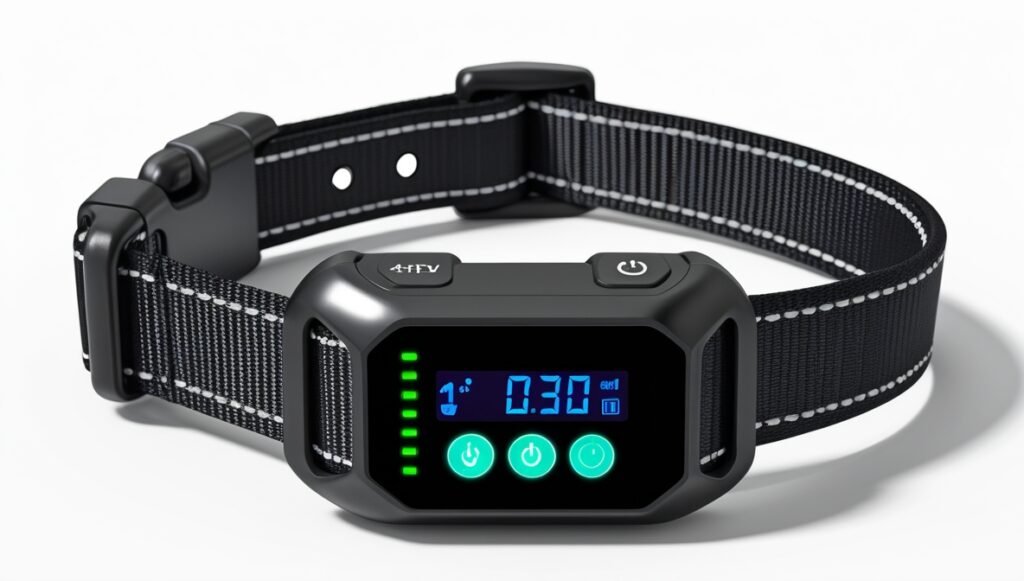
Choosing the Right No-Shock Bark Collar
When selecting a no-shock bark collar, consider these key factors:
- Dog Size and Age: Check the manufacturer’s recommended size. Many no-shock collars are adjustable, but there are limits. For instance, PetSafe’s spray collar fits necks up to 27 inches and is designed for dogs “8 lbs and up”. The Frisco No-Shock Collar is rated for 15–110 lbs. A tiny breed (under 8 lbs) may need a mini-collar (like PetSafe’s Little Dog series) or a lightweight collar. The citronella Barktec collar described by eDog works on dogs as small as ~15 lbs, and the spray collar is noted to be effective and safe for dogs. When in doubt, measure your dog’s neck and compare to product specs best no shock dog bark collar.
- Type of Correction: Decide which mode you want. If you prefer not to deal with refills, a vibration-only or tone-only collar avoids consumables. If your dog is extra sensitive, a tone or citronella option may work best. Some collars, like PatPet AO1, offer multiple modes (sound, vibration, LED) to experiment. Others are fixed-mode (for example, PetSafe Vibration or Eyenimal spray-only). Having choices helps tailor the training: maybe start with tone, then add vibration if needed best no shock dog bark collar.
- Training Goals: Are you indoors mostly or outdoors? Do you need remote control? Some collars are auto (trigger on bark everywhere), others have handheld remotes. For example, PetSafe’s vibration collar is remote-controlled (range ~100 yards) – great for backyards or park training. Spray collars (PetSafe, Eyenimal) are automatic and waterproof, good for daily wear. Garmin’s BarkLimiter (vibration) works up to 3 months on battery, ideal for long-term training best no shock dog bark collar.
- Battery and Maintenance: Check if the collar is rechargeable or uses replaceable batteries. Rechargeables (USB) are convenient – e.g. PetSafe spray holds ~40 hours. Make sure to recharge regularly. If it uses spray cartridges (citronella), factor in ongoing costs. PetSafe includes one citronella cartridge, but you’ll need refills for extended use best no shock dog bark collar.
- Comfort and Build: Look for padded or silicone pads over contacts to prevent irritation. The GroovyPets collar (Dogster #4) mentions silicone caps for comfort (though it includes shock). For no-shock, collars tend to be lightweight with minimal prongs. Still, ensure your dog isn’t allergic to materials. Evaluate water resistance if your dog plays outside (most modern collars are waterproof).
- Adjustability: Many collars let you set sensitivity (how loud a bark triggers it) or intensity (how strong the correction is). Start with high (sensitive) and low (intensity) and adjust best no shock dog bark collar.
- Reputation & Reviews: Read user reviews on durability and efficacy. The Dogster review team combined brand reputation and vet input to select collars. Look for products from known pet brands (PetSafe, SportDOG, Garmin, etc.) or well-reviewed newer brands.
By considering these factors and consulting product specs, you can choose a collar that fits your dog and training needs. Always follow the manufacturer’s instructions for best results best no shock dog bark collar.
Top No-Shock Dog Bark Collars in 2025
Here are some of the leading no-shock bark collars available in the USA. These models are highly rated by experts and owners for effectively reducing barking without shocks:
- PATPET P650 Anti-Bark & Remote Dog Training Collar – Best Overall No-Shock Collar The PATPET P650 is a popular dual-collar system that uses tone and vibration to train your dog. (It does have a shock option – be sure to disable it.) It’s our top pick for its combination of features, design, and value. This collar is lightweight and comfortable, with short contact prongs, and it’s fully waterproof. It works up to ~1000 feet, making it suitable for backyard or park training, and it’s rated for dogs 15–110 lbs. The rechargeable battery lasts about 11–15 days per charge, and one remote can control two collars (great for multiple dogs).
- Modes: Sound (beep) + Vibration. Shock is available but should be off best no shock dog bark collar.
- Performance: Automatic intensity builds if barking continues, helping stubborn barkers. The collar is designed to distinguish actual barks (avoiding false corrections).
- Pros: Effective, humane deterrents; long battery life (2+ weeks); lightweight design; one remote for two dogs.
- Cons: Must ensure the shock function remains off (it’s there but not needed); not ideal for very small or very thick-coated dogs (contact may need fine-tuning).
- PetSafe Vibration Remote Dog Training Collar – Best for Small/Deaf Dogs This PetSafe collar is vibration-only (no shock, no sound). It comes with a handheld remote (100-yard range) and has 16 vibration levels to suit any size of dog. Because it only uses vibration, it’s gentle yet effective – and is even recommended for deaf or hard-of-hearing dogs who won’t hear tone corrections. The device is waterproof and adjustable for neck sizes up to 27 inches.
- Modes: Vibration only (16 intensity levels).
- Pros: Totally shock-free and humane; versatile for all dog sizes; great for teaching commands remotely; durable. Not expensive for what it offers best no shock dog bark collar.
- Cons: The range is relatively short (100 yards) – fine for yard use but not for hunting/very far off-leash. Some users report needing to recharge it every week or so (battery life ~14 days).
- Frisco Rechargeable No-Shock Dog Bark Collar – Best Value (All-in-One) Frisco’s collar (an in-house Chewy brand) uses sound (tone) + vibration to deter barking. It’s completely shock-free and very affordable. It’s designed to cover 15–110 lb dogs (15 lb minimum) and provides about 400 correction cycles per charge. The modern design sits on the collar strap, with flat prongs that need to touch skin best no shock dog bark collar.
- Modes: Tone and vibration, automatically triggered by barking.
- Pros: Highly effective on many dogs; gentle yet clearly interrupts barking; one of the cheapest no-shock options; rechargeable (saves on batteries). The combination of two stimuli often doubles training effectiveness.
- Cons: Requires good skin contact – long-haired dogs may need a trim or a secondary collar to press the prongs in. Not intended for dogs with severe aggression issues (manufacturers advise caution) best no shock dog bark collar.
- PetSafe Rechargeable Remote Spray Dog Collar – Best Citronella Collar This remote training system by PetSafe delivers a burst of citronella spray, plus options for vibration and tone. It’s completely shock-free. The collar automatically senses barking and sprays; you can also activate vibration or tone via remote. It’s ideal for medium-sized dogs (8 lb and up) and is waterproof (for use up to 300 yards) best no shock dog bark collar.
- Modes: Citronella spray, vibration, tone (three humane modes).
- Features: Rechargeable (2h charge, ~40h use); comes with unscented and citronella cartridges; fits up to 27″ neck.
- Pros: Versatile correction options – if your dog ignores the spray, switch to tone or vib. Citronella is a “gentle and effective deterrent” that’s safe for dogs (no harm other than an unpleasant smell). Works well on small-medium dogs that meet the weight requirement.
- Cons: Spray cartridges run out (need refills after ~35 sprays). Not the best for extended outdoor use without a charger. Some very determined barkers may eventually habituate, though you have alternative modes.
- PatPet AO1 No Electric Shock Dog Training Collar – Best for Sensitive Dogs The PatPet AO1 is a waterproof bark collar that explicitly has no shock option. It offers three stimuli: tone, vibration, and a red LED light. You can adjust levels for each mode (and 7 vibration levels). It has a long range (600 yards) and decent battery (remote lasts ~10 days, collar ~5.5 days). It’s recommended for dogs 30–110 lbs best no shock dog bark collar.
- Modes: Tone (beep), vibration, LED light. No static shock at all.
- Pros: Puts dog comfort first: you can tailor the mode for a highly sensitive pup. Good range for big yards; medium battery life; sleek design. The remote even warns if the dog is getting too much stimulation.
- Cons: Not for very small dogs (30+ lbs minimum). If you have multiple dogs, each dog needs its own collar (only one collar per unit) best no shock dog bark collar.
- Eyenimal Deluxe Lemon Scented No Bark Spray Collar – Best Gentle Spray Collar This unique collar is vibration-activated and sprays a lemon-scented mist (citronella-like) at each bark. It has no electronics or shocks – just a sensor and a reservoir of liquid. The battery lasts about 3 years under normal conditions! Because it’s so simple, it never misfires (unlike some automatic sensor collars). It’s suitable for dogs 6 months and older (size not specified, but generally for small/medium since it’s the Deluxe model).
- Mode: Citronella spray only (vibration-activated).
- Pros: Completely pain-free. Effective enough that we’re told it “works by simply spraying a lemon-scented mist that is completely harmless”. Incredible battery life (years) because it’s passive. No need to recharge – just refill citronella every once in a while.
- Cons: Collar must be on the dog’s neck (prongs sense vibration) or it won’t work – long coats can reduce contact. Citronella is consumable (refill needed after ~150 sprays). It may not be as quick-acting as electronic collars for very stubborn barkers.
Each of these collars serves a slightly different need. The PATPET P650 is a strong all-around performer (top pick), while the PetSafe Vibration collar is ideal for dogs that need a very gentle touch. The Frisco No-Shock provides excellent value with simple sound/vib modes. The PetSafe Spray system excels if you like having multiple deterrent options (and a remote). The PatPet AO1 is specialized for very sensitive breeds, and the Eyenimal Spray is perfect for owners who want zero static and minimal tech (just a spray).
No-Shock Bark Collars for Small Dogs
Small-breed dog owners often seek collars specifically designed for tiny necks and gentle stimuli. Many no-shock collars mention a minimum weight (e.g. 8–15 lbs). Here are some top picks for small dogs: best no shock dog bark collar.
- PetSafe Little Dog Spray Collar (Model PBC00-11283): Though not on our cites list, this is the spray version of PetSafe’s little-dog line. It’s sized for dogs 8–25 lbs and uses citronella spray – an effective anti-bark device for small breeds. The “Perfect Bark” sensor ensures it only corrects your dog’s voice.
- Frisco Rechargeable No-Shock Collar: As noted above, fits dogs 15 lbs and up. While 15 lbs isn’t “toy breed” small, many owners of smallish dogs (like Chihuahuas, Pomeranians ~5–15 lbs) have success by keeping the sensitivity high. The Frisco collar’s gentle tone+vibration can work on tiny pups if the weight threshold is met.
- Eyenimal Lemon Spray Collar: This collar suits small breeds (6 months+). Its citronella mist is gentle, making it a great choice for small, sensitive dogs. As eDog Australia notes, citronella collars are “a safe and shock-free way to stop barking”. The liquid is harmless to dogs, so there’s no pain involved best no shock dog bark collar.
- Citronella (Lemon) Bark Collars: Similar to Eyenimal, many brands offer citronella spray collars specifically for little dogs. Citronella is noted as “non-toxic” and safe. If you have a very tiny pup (under 7 kg/15 lbs), make sure the collar isn’t too bulky – some collars like Barktec BT-100 require at least ~15 lbs for the receiver to fit comfortably best no shock dog bark collar.
- Akclab Ultrasonic Devices: While not a collar, consider an ultrasonic device for your home. The AKC discusses ultrasonic bark deterrents (high-pitched sirens) that stop any nearby dog from barking. These can cover multi-dog households and don’t need collars at all – but only work within range of the machine.
Tip: When choosing for small dogs, look for collars that explicitly say “small dog” or list a low minimum weight (8 lbs is common). Light, slim designs help ensure the collar isn’t too heavy. You may also prefer collars with foam contacts or silicone to protect tender neck skin.
Training Tips and Safe Use of No-Shock Collars
- Combine with Positive Reinforcement: Never rely on a collar alone. Reward your dog whenever it is quiet. For example, if the collar stops a bark, immediately give a treat for silence. “Clicker training” or giving treats when the doorbell rings and the dog stays quiet can teach the desired response best no shock dog bark collar. This way the collar is just one part of learning best no shock dog bark collar.
- Gradual Introduction: Let your dog get used to the collar first. Put it on (without turning it on) and praise your dog for staying calm. Then test the correction yourself and adjust the settings. You can simulate barking by making loud noises yourself (as ElleVet suggests) to feel the effect. Start at the lowest setting so your dog isn’t overwhelmed best no shock dog bark collar.
- Monitor Sessions: Begin training sessions in a controlled setting (like your living room). Watch how your dog reacts to the vibration or spray. If it seems frightened, you may need to lower the setting or try a different mode. Keep sessions short. After a week or so, gradually let the dog wear the collar during normal activities (supervised) so it learns that everyday barking will trigger the correction. Always take breaks – don’t leave the collar on 24/7 best no shock dog bark collar.
- Teach an Alternate Cue: Some trainers recommend teaching a “quiet” command alongside the collar. When your dog stops barking (due to the collar), say “Quiet” and reward. Eventually, the dog learns that “Quiet” plus being calm yields treats, reinforcing silence with reward best no shock dog bark collar.
- Regular Collar Checks: Adjust the fit as needed. As your puppy grows or your dog gains/loses weight, the collar may need resizing. Check skin under the collar daily for any irritation best no shock dog bark collar.
- Safety Shut-off: Most collars have an automatic shut-off if the dog barks continuously for 1-2 minutes. This prevents over-correction. Make sure this safety feature is active (usually it is by default) best no shock dog bark collar.
- Consult Professionals: If your dog has severe behavior issues, consider working with a certified dog trainer or veterinary behaviorist. They can help ensure the collar is used correctly and address any underlying anxiety or aggression.
Using Collar Alternatives and Rewards
No-shock collars do not teach calm behavior on their own. Always reward calmness. Hide treats around the house to make quiet time fun. Give toys or chewables to keep your dog occupied instead of barking from boredom. Some low-tech deterrents can also help: for example, the AKC suggests using puzzle toys or engaging games when a barking trigger (like the mailman) arrives. White noise machines or background music can mask outside triggers best no shock dog bark collar.
Always remember that barking is a natural form of communication. The goal is to reduce unwanted barking, not to silence your dog completely. In most cases, combining a humane no-shock collar with patience, consistency, and positive training yields the best long-term results best no shock dog bark collar.
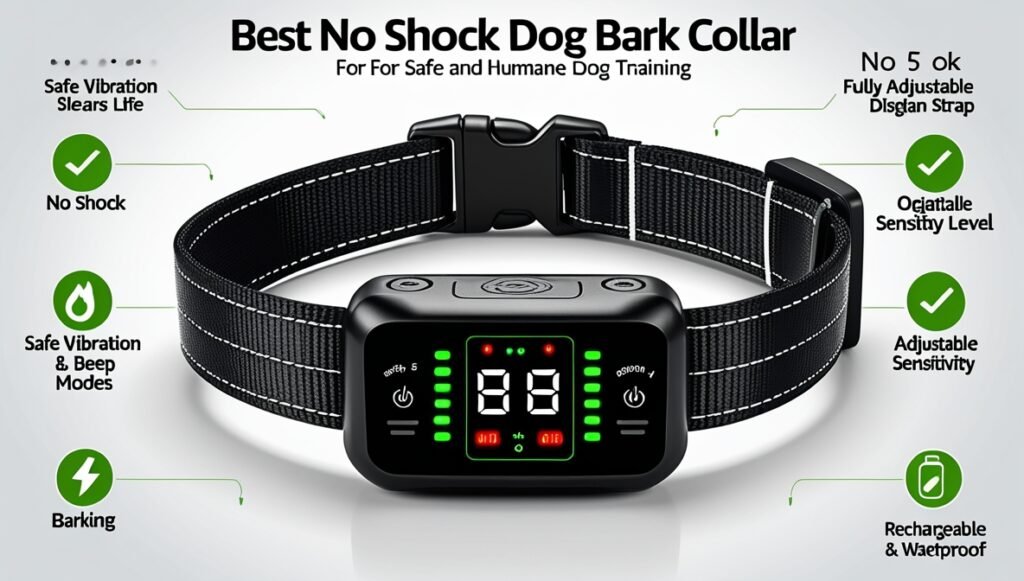
Frequently Asked Questions
Q: What exactly is a no shock dog bark collar? A: A no shock bark collar is an anti-barking device that does not use electric shocks. Instead, it uses alternatives like vibration, ultrasonic sound, or citronella spray to deter barking. When your dog barks, the collar senses it and triggers a harmless correction (a buzz, beep, or spray) to interrupt the barking. The idea is to startle or distract the dog rather than pain it. Common types are vibration collars, ultrasonic sound collars, and spray collars (citronella or lemon) best no shock dog bark collar.
Q: Are no shock bark collars safe and humane? A: Yes, they are generally considered safer than shock collars because they avoid painful stimulation. Since they only give a vibration, sound, or scent, they are less likely to injure a dog. PetSafe describes the citronella spray as “gentle and effective”, and long-time users report no physical harm. However, because they still rely on an aversive stimulus, they must be used carefully best no shock dog bark collar. Dogs can become anxious if over-corrected, so collars should be fitted properly and used short-term. Many veterinarians advise that no-shock collars, when used as part of a balanced training plan, are a reasonable humane option, but emphasize supplementing them with positive reinforcement training best no shock dog bark collar.
Q: How effective are no shock dog bark collars? A: No shock collars can be very effective for many dogs in reducing nuisance barking. They provide instant feedback every time the dog barks, helping it learn to associate barking with an unpleasant interruption. Most owners see a reduction in barking within days to weeks. For example, PetSafe claims their bark collar can change behavior “within as little as 2 weeks”. Ultrasonic and vibration collars are especially popular for consistent indoor use, while spray collars work well outdoors. Effectiveness varies by dog: some dogs respond immediately, others may need extra training support. They tend to work best on dogs barking out of habit or excitement. Note that no collar will work if the dog doesn’t wear it or if it’s used incorrectly.
Q: Can I use a no shock bark collar on my small dog? A: Yes, many no-shock collars are designed for small breeds. When buying for small dogs, check the collar’s weight and neck-size range. Some collars specify a minimum weight (e.g., 8 lbs). There are small-dog versions of popular collars. For tiny dogs, citronella spray collars (like PetSafe’s Little Dog Spray Collar) are often recommended, because the spray is gentle. The Frisco and PetSafe vibration collars fit a wide range of sizes. The Eyenimal Lemon Spray collar works on dogs 6 months and up, including small breeds. Always choose a lightweight collar and start at low settings for a small dog’s comfort best no shock dog bark collar.
Q: What is the best type of no-shock collar for sensitive or anxious dogs? A: For very sensitive dogs, vibration-only collars or citronella spray collars are typically best. Since vibration is a very mild correction,best no shock dog bark collar it won’t startle a timid dog as much as an ultrasonic tone might. The PatPet AO1 collar offers vibration, tone, and even an LED light – you can omit the stronger stimuli entirely. Citronella spray collars (like the Barktec or Eyenimal) are also gentle – they just introduce a scent. These are usually safe enough that even delicate dogs handle them. The key is to monitor your dog’s reaction and use the collar at the lowest effective setting best no shock dog bark collar.
Q: How do I choose the right no shock bark collar? A: Start by identifying your needs: Will the dog be outdoors (do you need long range or waterproof)? Is the dog very small? Do you want a remote-controlled collar or automatic? Then look at specific features: – Modes: (sound, vibration, spray). Pick one your dog is likely to respond to. Sprays often work well indoors or in open spaces, vibration is great for everyday use, and sound is good for immediate alerts. – Adjustability: Choose collars with multiple levels of sensitivity and intensity so you can fine-tune. – Size/Weight: Ensure it physically fits your dog. For small dogs, collars that specify “for dogs 8–15 lbs” are best. – Battery Type: Rechargeable collars save money over time. If it’s automatic (like spray collars), consider battery life. – Reviews: Check owner experiences for durability and real-world performance. Many owners recommend the above models from PetSafe, Frisco, PatPet, etc. In summary, the best collar is one that your dog tolerates well and that consistently interrupts barking. Our top pick (PATPET P650) is a great general option, but if you have special needs (small dog, extra range, etc.), consider the other models listed best no shock dog bark collar.
Conclusion
Choosing the best no shock dog bark collar means finding a humane tool that fits your dog’s size and your training needs. The collars reviewed here – from PatPet and PetSafe to Frisco and Eyenimal – all deliver effective barking deterrents without using electric shocks. They employ gentle buzzes, sounds, or sprays to interrupt barking immediately. As noted, almost 60 million U.S. households have dogs, and a peaceful home often depends on stopping nuisance barking. No-shock collars can help achieve that balance safely.
When used properly – snugly fitting, correct mode, paired with positive rewards – these devices teach your dog to be quiet without causing pain. Always start with low intensity, supervise your dog during initial use, and continue training with praise for silence. If you give your pet a comfortable environment, exercise, and toys, and use a no-shock bark collar as needed, you can enjoy the benefits of a quieter home without harsh methods best no shock dog bark collar.
Tip: If you’ve tried a no-shock collar that worked wonders (or if you have tips), please share in the comments! Your experiences can help fellow pet owners. Feel free to share this guide on social media to help others find the best dog barking deterrents best no shock dog bark collar.
Sources:
Authoritative reviews and expert pet-care sites, including ElleVet, Rover.com, the AKC, PetSafe product info, Dogster’s 2025 collar reviews, and eDog NZ tips. These sources offer detailed insights on no-shock bark collars, their usage, and training best practices.






